Home sweet home: 12 F1 wins that delighted the crowd
The ecstasy and the agony. Simon Arron looks at the dozen grand prix victories that delighted a partisan audience... or at least should have done
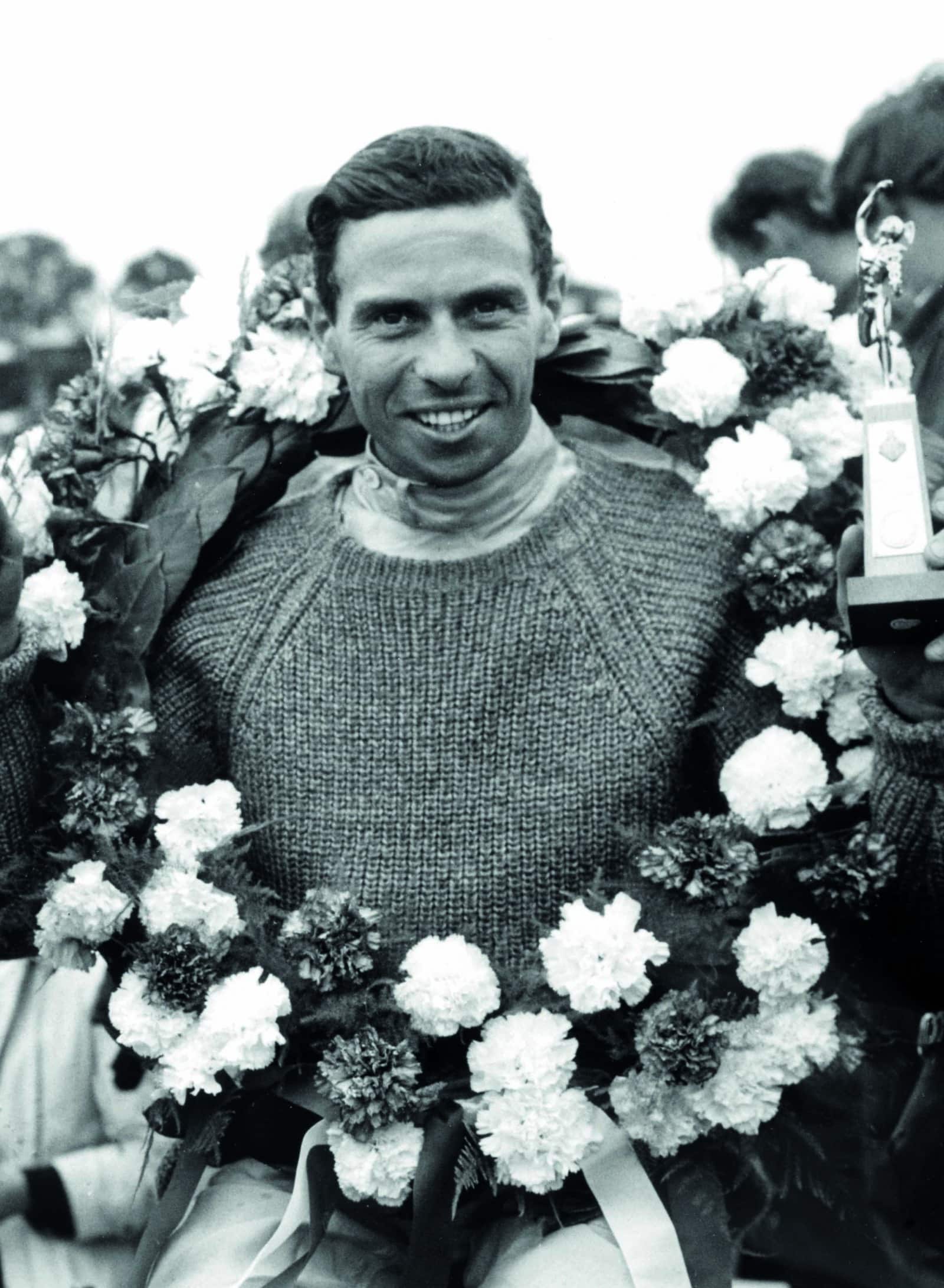
Popperfoto via Getty Images
Jim Clark Silverstone 1965
For the first half of the British Grand Prix it had looked fairly straightforward, Jim Clark pulling away in his Lotus 33 with only Graham Hill able to stay vaguely in touch. After 50 of the scheduled 80 laps, however, Clark’s engine developed a slight misfire which became ever more audible. He was well clear of the field by then, but BRM gave Hill signs of encouragement via his pitboard, alerting him to the leader’s potential frailty.
As the gap between them diminished, Hill – in pursuit of his first British GP victory – strove ever harder. Clark, meanwhile, had a supplementary concern, for he was now losing oil. The solution? He coasted around corners and used his engine hard only on the straights, when the cockpit gauge indicated he had sufficient pressure. Hill had him almost in sight at the start of the final lap, when he broke the track record, but Clark nursed his Lotus home with 3.2sec to spare.
Hill never would win his home race.
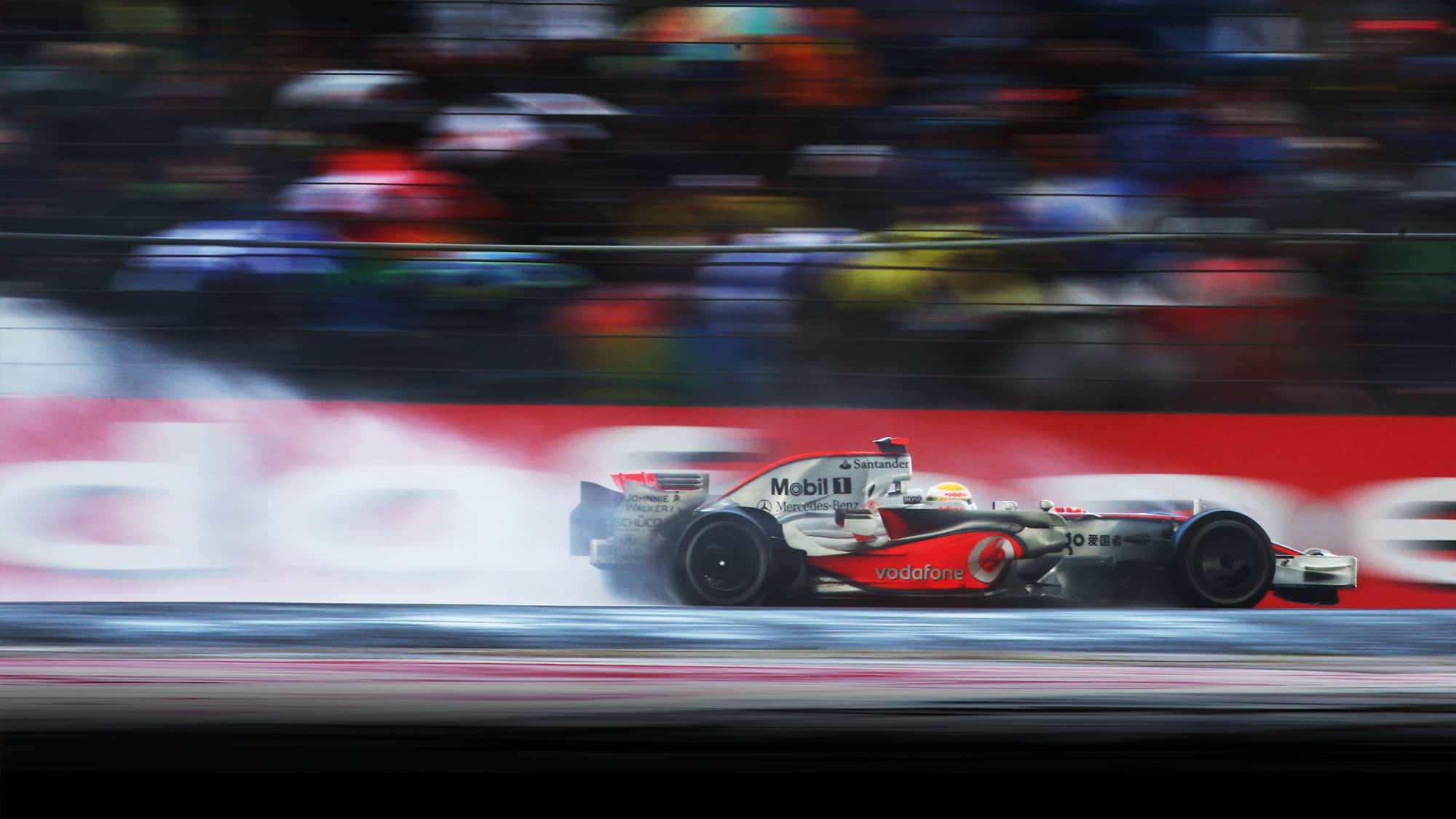
Lewis Hamilton Silverstone 2008
One year earlier at the same venue, Lewis Hamilton had taken pole by dint of an artificially light fuel load but was well beaten by McLaren team-mate Fernando Alonso in the race. This time Heikki Kovalainen went into qualifying with the lighter McLaren and emerged at the top of the times – but he was still ahead
of Hamilton when weight disparities were factored in, the Finn slightly better at nursing a set of fresh Bridgestones over a full lap. But that was in the dry…
Sunday was cloaked in soggy uncertainty. Lining up fourth, Hamilton had a couple of notionally tricky adversaries to usurp before he could tackle his team-mate, but he dispensed with Kimi Räikkönen and Mark Webber before he’d reached Copse – then the first turn – on the opening lap. He and Kovalainen kissed wheels gently as they teetered through, though the Finn stayed ahead. At the same corner on lap five, however, Hamilton sliced past prior to disappearing into a parallel universe.
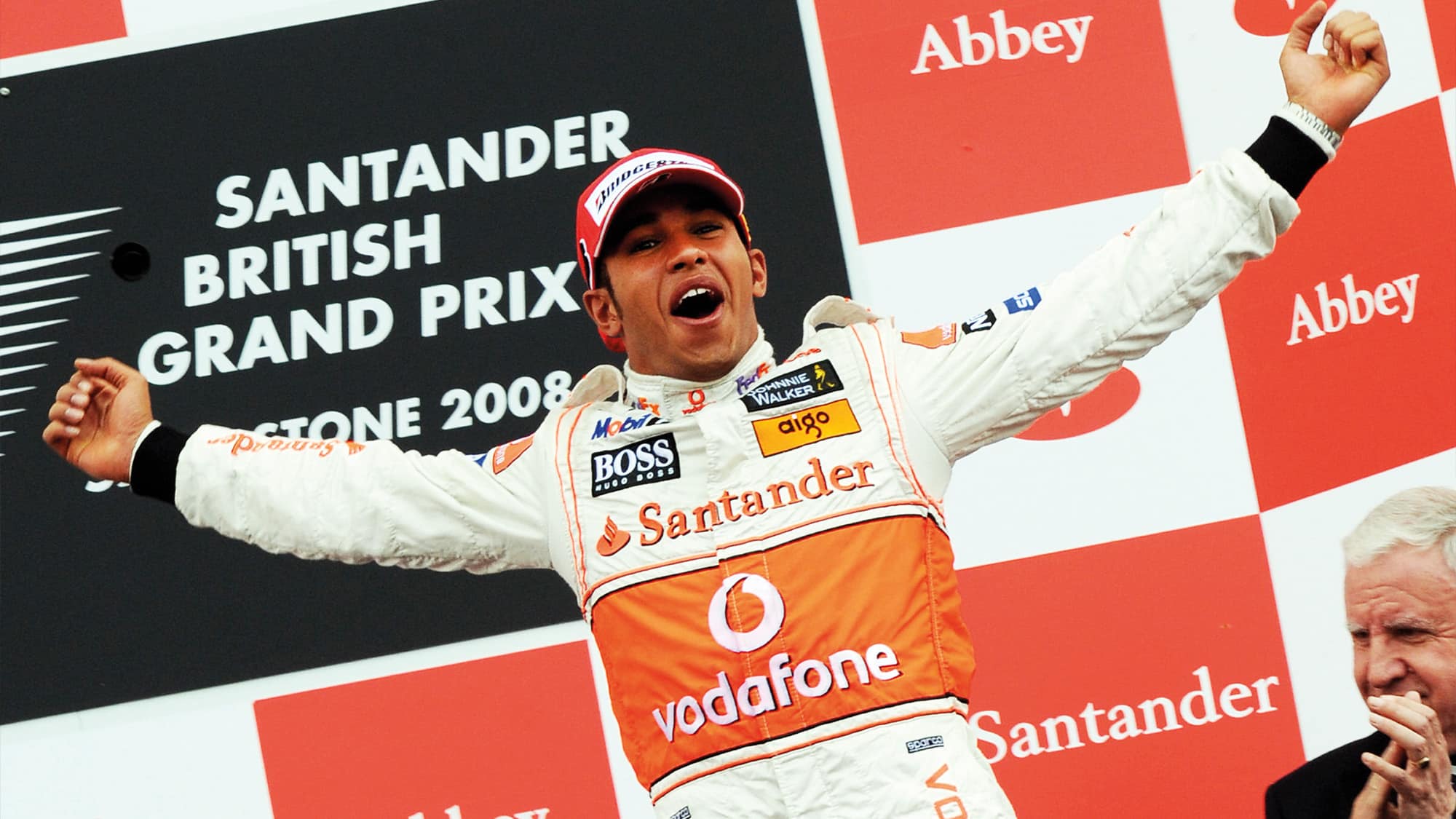
He continued to lead as conditions remained tricky, but made only one slight error – sliding onto the grass at Abbey shortly after the rain intensified just beyond half-distance. At one point, when the track was at its most treacherous and the two McLarens had comparable tyres and fuel loads, Hamilton was up to five seconds per lap quicker than Kovalainen, who was by then in the lower reaches of the top six. He went on to win by more than a minute, with only Nick Heidfeld and Rubens Barrichello unlapped.
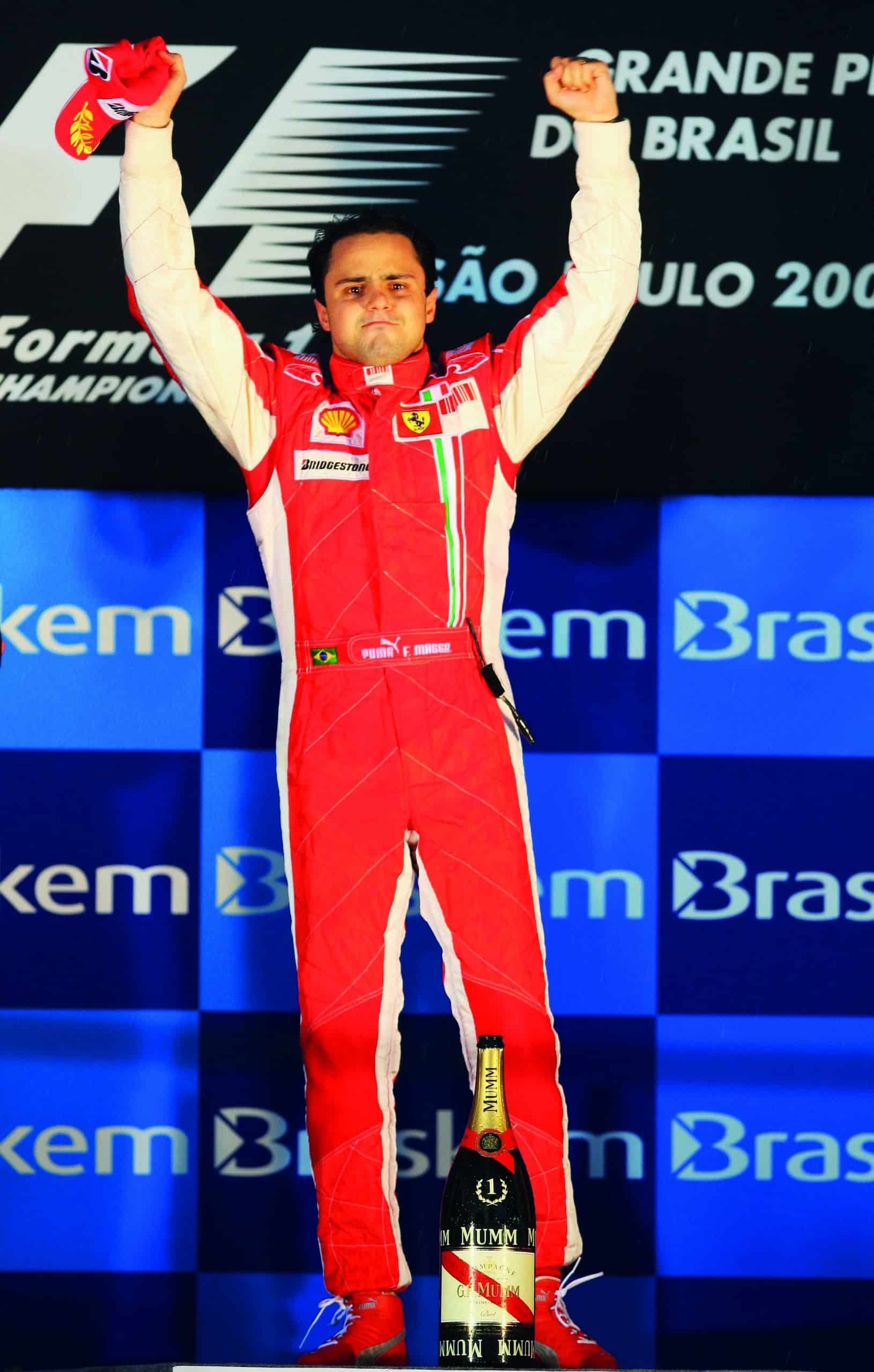
Felipe Massa Interlagos 2008
One year beforehand, Lewis Hamilton had been the Paulistas’ darling – a flamboyant young racer gunning for the world title in his rookie season – but now he was public enemy number one, for he was competing for the same accolade against one of their own.
The odds were stacked against Felipe Massa. All he could do was win the race and hope Hamilton finished no higher than sixth.
Massa was flawless, putting his Ferrari on pole and driving impeccably on a rain-affected afternoon to take a dominant victory. As he crossed the line, Hamilton was only sixth – and momentarily Brazil erupted. The Englishman still had to complete the distance… and passed Timo Glock’s Toyota at the final corner to secure fifth and stifle those celebrations.
Massa was a paragon of dignity. As his engineer Rob Smedley said, “His reaction enabled people to see the real Felipe, someone who was a fierce competitor, who had been Lewis’ equal but knew how to take defeat. He did himself a lot of favours that day. If he had won the title, would he have been held in any higher regard? I don’t think so.”
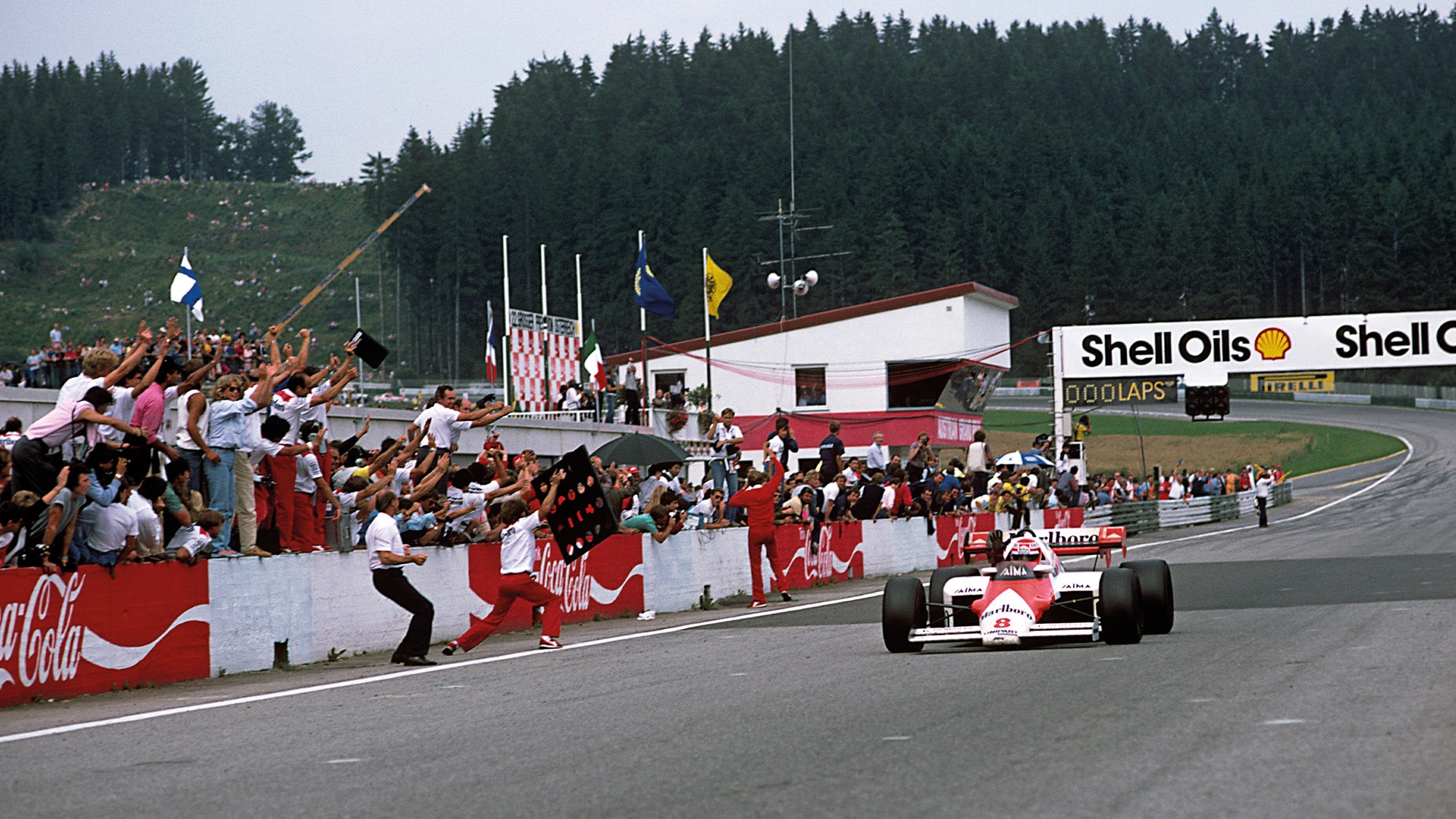
Niki Lauda Österreichring 1984
Twice a world champion with Ferrari in the 1970s, Lauda had scored five grand prix victories since returning to F1 in ’82 – three of them in the first part of this season, when McLaren was back to full competitiveness thanks to its Porsche-designed TAG V6 turbo. But he faced stiff opposition from the same garage in the form of Alain Prost. As Lauda told Motor Sport in 2017, “He was fast. You had to turn the turbo up to double power for qualifying and I hated that – but he could handle it perfectly. I decided I had to try something else to get the upper hand. So from Friday I worked on race set-ups, and in races I was in better shape.”
In this instance he received a helping hand from Lotus driver Elio de Angelis, whose engine blew and coated the Jochen Rindt Kurve with oil. Leading from pole, Nelson Piquet (Brabham) slithered through unscathed but the following Prost spun. Lauda moved up to second and then picked off Piquet before cruising to victory. It gave him a championship lead that he would keep to the end of a season in which he clinched his third world title by just half a point.
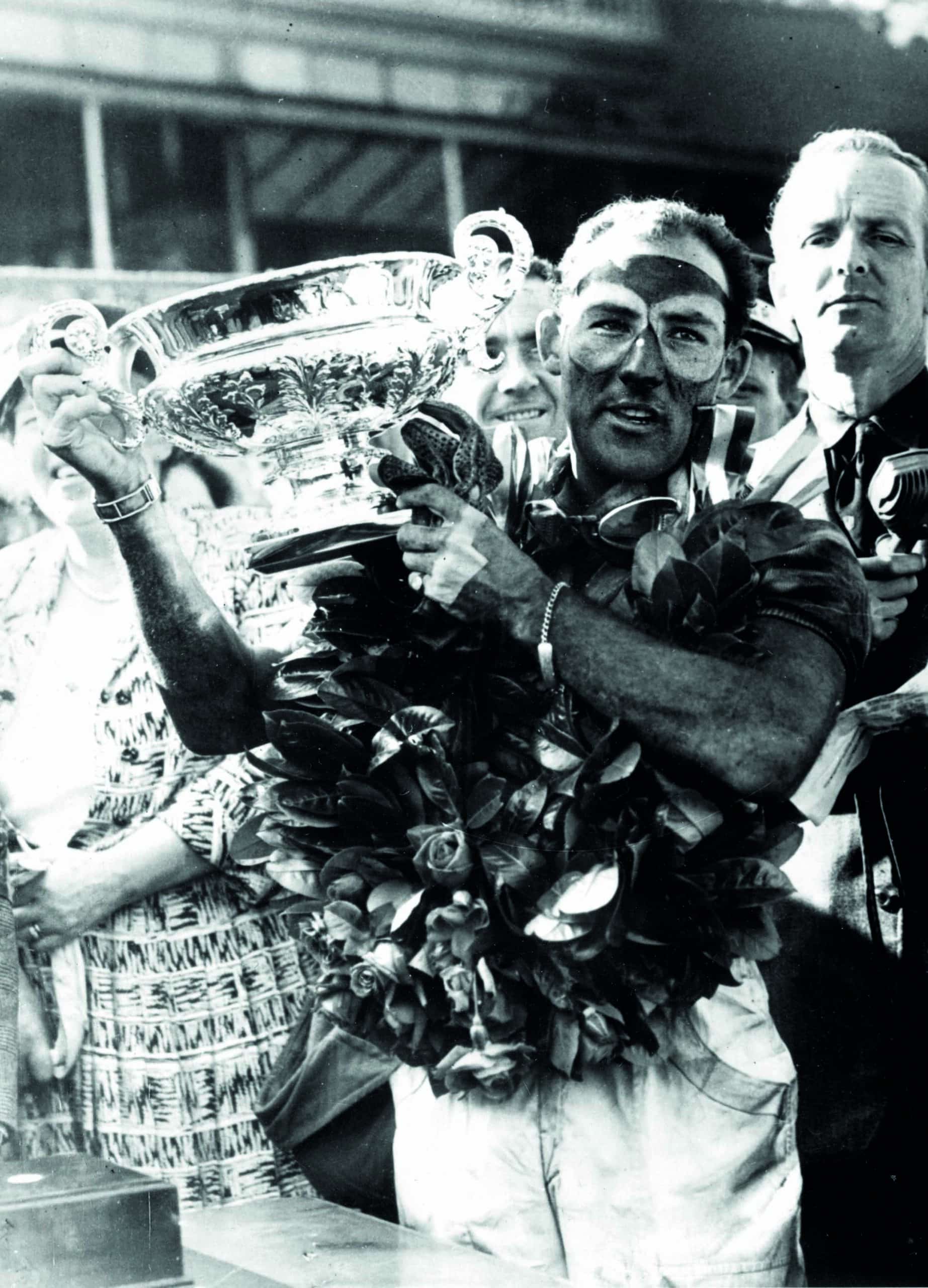
Stirling Moss Aintree 1955
It’s a question that has never definitively been answered, nor ever will be: did Juan Manuel Fangio allow young team-mate Stirling Moss to win his home race on July 16, 1955? The Argentine always denied as much – and even if he did, it would hardly be a blemish on Moss’ extraordinary track record.
Moss qualified his Mercedes W196 on pole position by two tenths from Fangio – and such was the margin that separated them after 90 laps. Moss also recorded the fastest race lap. The pair swapped places a couple of times early in the race, after Fangio had made the better start.
Denis Jenkinson noted in his Motor Sport report (August 1955): “On lap three, Fangio let Moss go by and it became pretty obvious that the British Grand Prix was under control by the Mercedes-Benz team. Clearly, Moss was going to be allowed to set the pace and probably win.” Fangio was ahead again by lap 17, however, and the two weren’t driving as though any form of team instruction had been issued. Jenks again: “Moss had a go to regain the lead as they rounded Tatts Corner but Fangio did not give way, and then on lap 26 he got by at the end of the long straight. It was clear that if Moss was going to be allowed to win, he was going to have to work for it.”
He would not be headed again. Moss extended his lead to nine seconds at one point – the Motor Sport report putting this down to the vagaries of lapped traffic, though the magazine’s photographer Michael Tee has confirmed that he witnessed Fangio having a quick spin – and the gap came down after Mercedes ordered its drivers to slow to preserve their cars to the end.
It was Moss’ maiden world championship grand prix victory – and also the first time there had been a home win in any British GP, pre- or post-war. Irrespective of circumstance, it was a landmark.
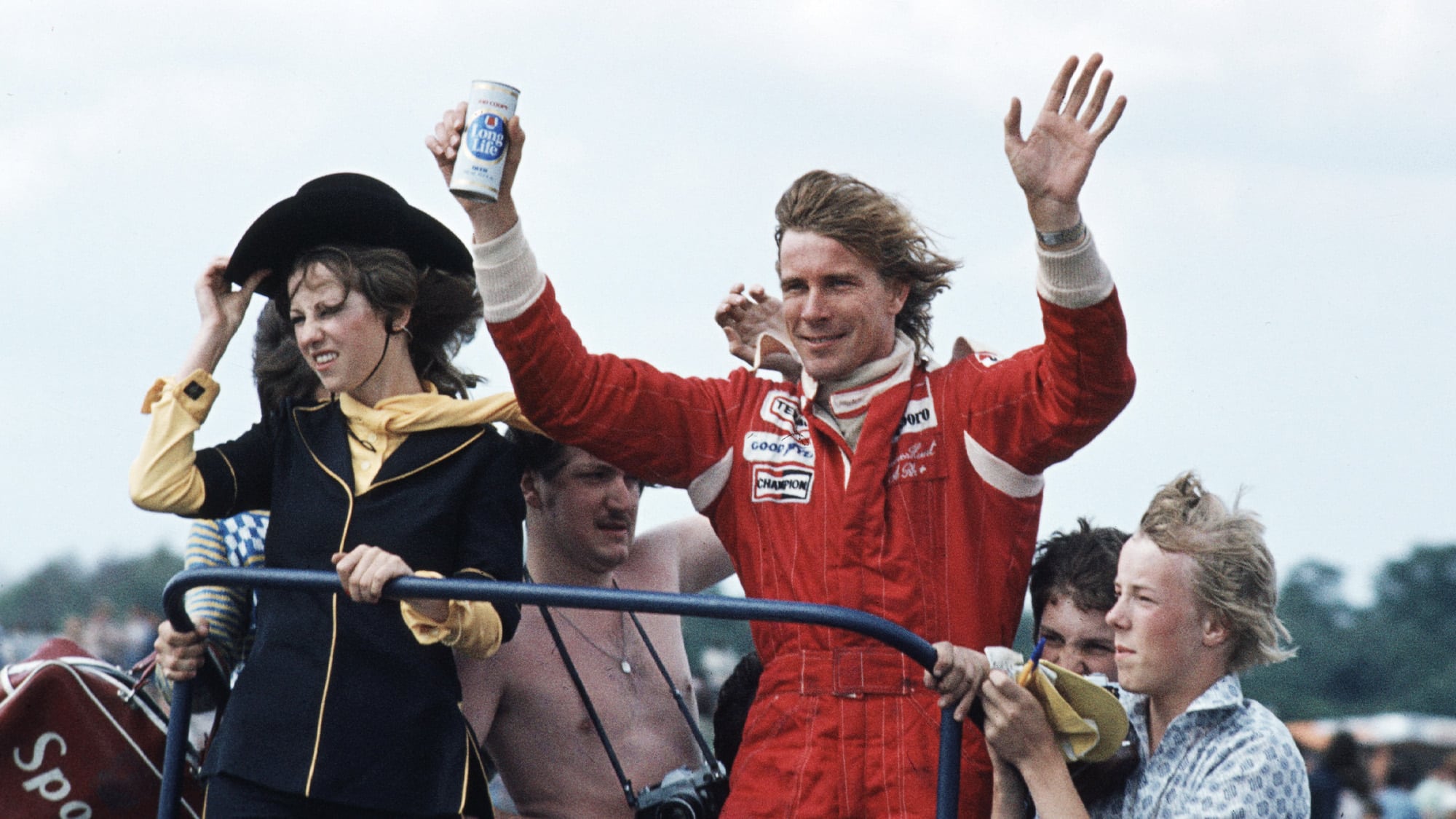
James Hunt Silverstone 1977
The summer of ’77 contained little of the drama that had made Formula 1 regular front-page news the previous year, but James Hunt was now firmly established in the national conscience; he was no longer just a racing driver, but a central pivot in TV ads with Morecambe & Wise.
Having qualified his McLaren on pole, he slipped to fourth after an indifferent start as John Watson took control for Brabham. Hunt worked his way back to second and chased down Watson, but the Ulsterman was driving impeccably and didn’t offer a whiff of opportunity. But then his Alfa flat-12 lost fuel pressure and retirement beckoned.
It would have been a home win either way, but Watson’s turn would come at the same venue four years later.
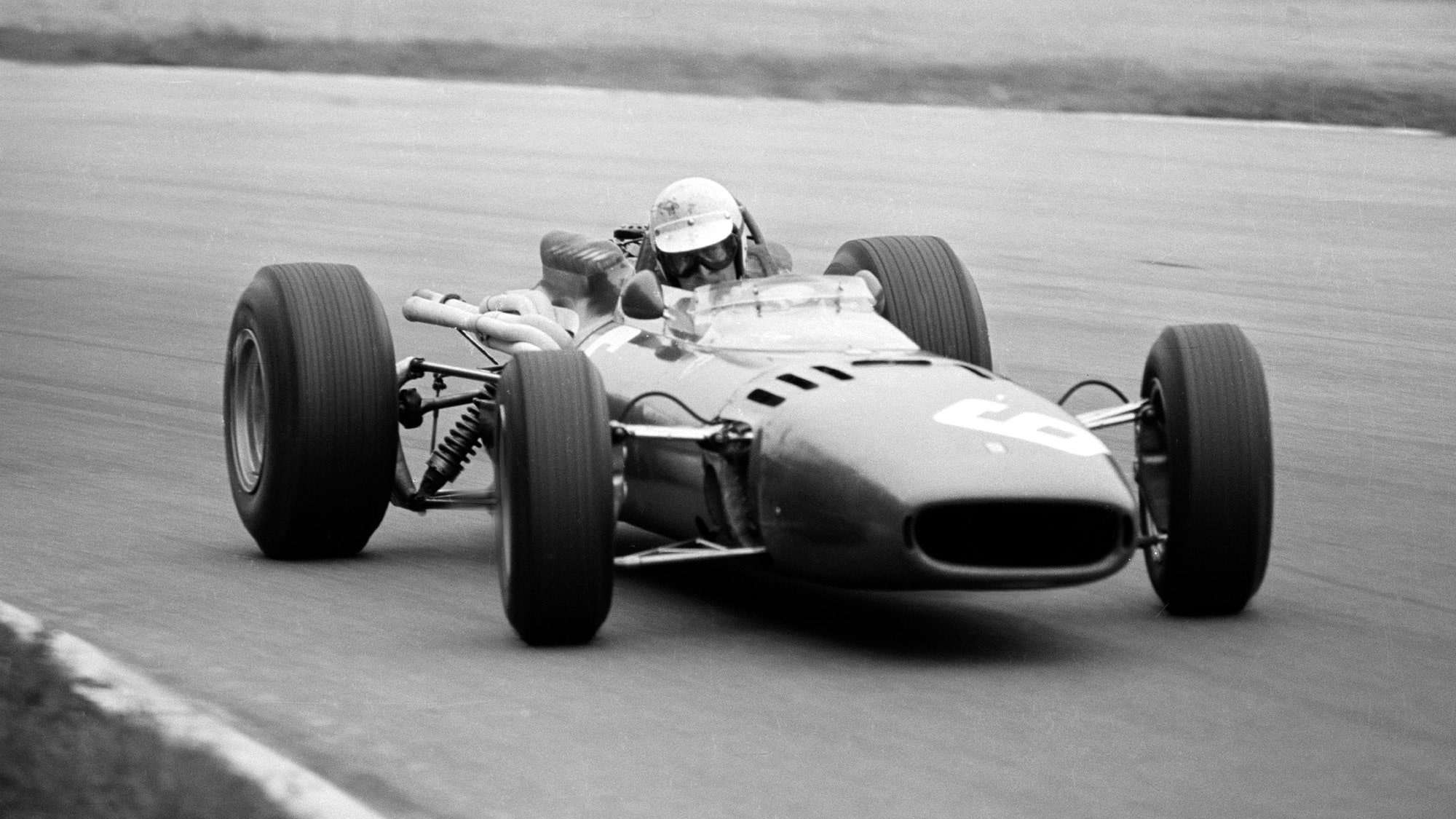
Ludovico Scarfiotti Monza 1966
“Scarfiotti was holding back slightly as was Surtees, both intent on jumping the start. When the flag fell Scarfiotti was already on the move from a few feet behind the line and he shot into the lead.” A couple of details from Denis Jenkinson’s Motor Sport report (October 1966) underline the absence of telemetric frippery… and also the fact that a blind eye was always likely to be turned. Scarfiotti was an Italian in a Ferrari and Surtees remained a national hero, despite his separation from Maranello.
Scarfiotti lost pace but remained with the leading pack and worked his way to the front. A duel for second between Parkes (Ferrari) and Hulme (Brabham) enabled Scarfiotti to pull clear. If you had to choose a venue at which to win your only world championship grand prix…
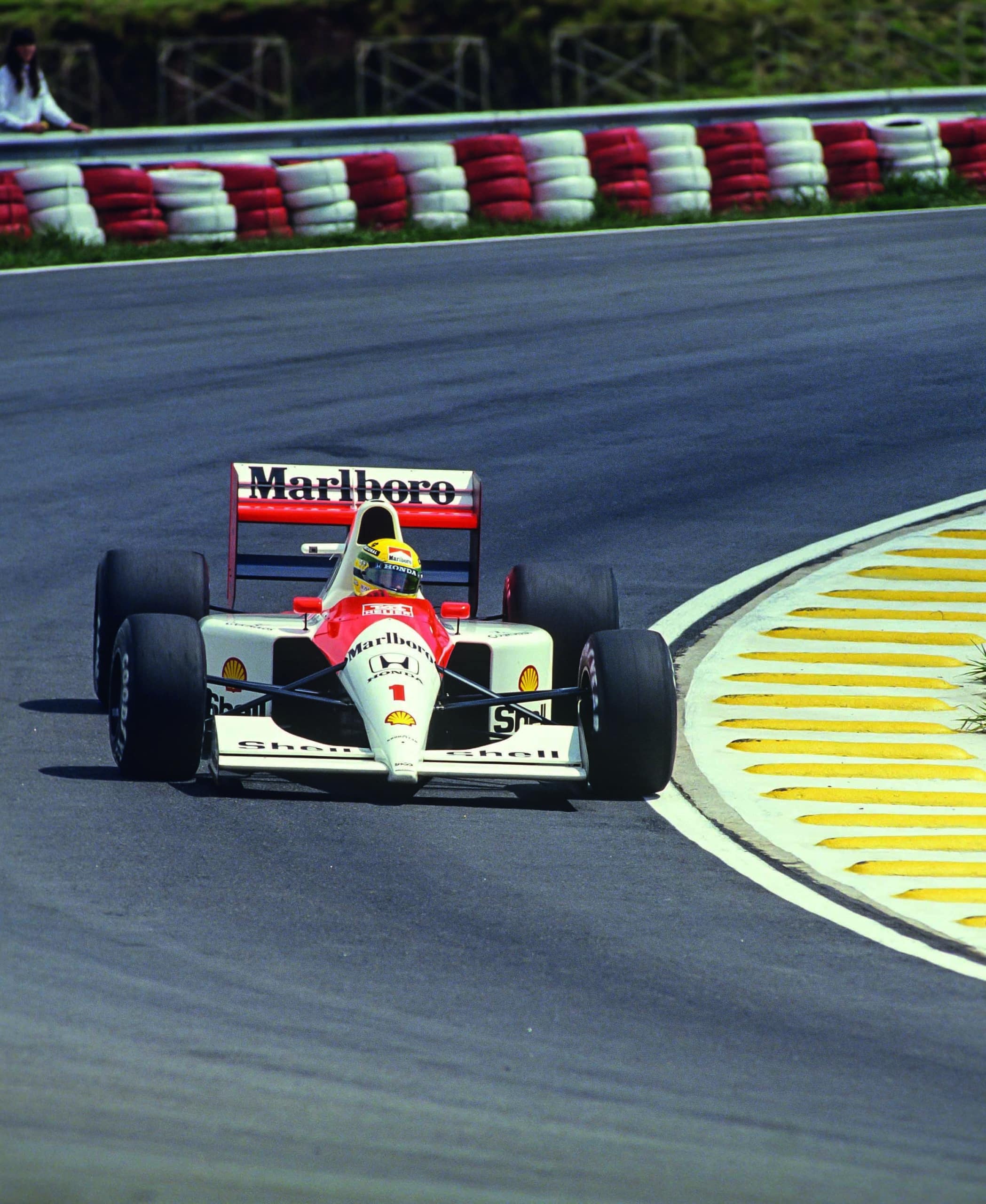
Ayrton Senna Interlagos 1991
“After the dramatic inflation of recent months, and the manner in which most of them drive on what pass for roads in São Paulo, the local populace is used to scrapes and close escapes. Yet 70,000 of them held their breath throughout the closing laps of the Brazilian GP as their idol, Ayrton Senna, performed perhaps the greatest escape of them all…”
Thus began David Tremayne’s account of the Brazilian Grand Prix (Motor Sport, May 1991), of which more can be read in Maurice Hamilton’s companion feature (see earlier). The Brazilian had on seven previous occasions failed to win his home race, though he’d finished second for Lotus in 1986, but this time everything seemed to be under control… until his McLaren-Honda jammed in sixth. Senna had resisted fierce pressure from Nigel Mansell’s Williams, but was well clear of Riccardo Patrese’s sister car after the Englishman’s transmission packed up.
Senna hung on to take the flag by less than 3sec and screamed in celebration, Patrese initially having been 40sec in arrears.
“In the slow corners, I was pulling only 2000rpm and the engine was nearly stalling,” Senna revealed. “In the fast corners the car always wanted to push straight on. I saw Patrese coming and didn’t think I would make it, but I felt it was my duty to win here. I pushed the car regardless of the rain, but I was getting cramps and muscle spasms in my upper body. Partly that was because the safety harness was so tight, but also because of emotion! By the finish I had nothing left.”
His total exhaustion was clear from the post-race photographs.
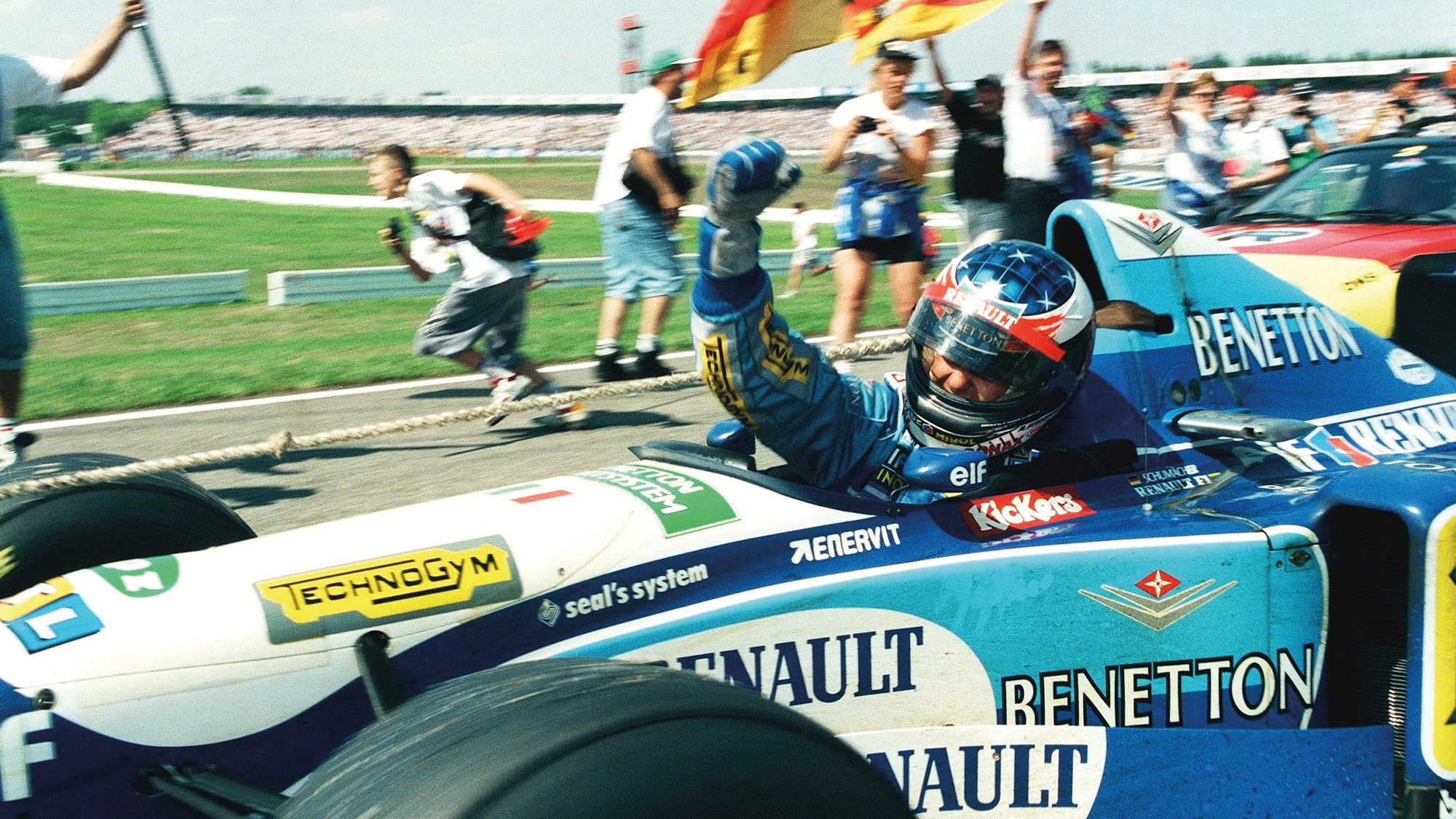
Michael Schumacher Hockenheim 1995
It’s hard to comprehend how swiftly Germany’s passion for Formula 1 morphed from two sell-out races per annum, both cacophonous festivals infused with the twin scents of barbecue and beer, to a struggle to support just one. And that despite the post-Schumacher successes of Sebastian Vettel, Nico Rosberg and Mercedes-Benz.
The kid from Kerpen was the pivot for their passion; not the first German-born champion, but the first officially to represent the nation.
The mood was always boisterous at Hockenheim, and never more so than this day. It wasn’t just that Schumacher won, it was the circumstances surrounding his success. Nemesis Damon Hill had taken pole, led at the start and pulled two seconds clear during the opening lap, but then spun into the tyre wall at the first turn as he began his second lap. The cheers – and jeers – rang out long and loud.
Schumacher subsequently made good use of a two-stop strategy to stay ahead of David Coulthard’s surviving Williams, which pitted only once, and came away with his championship lead extended to 21 points. Investigations showed that Hill’s departure was not of his own making, Williams establishing that his left-hand driveshaft showed unusual signs of wear. The crowd could not have cared less.
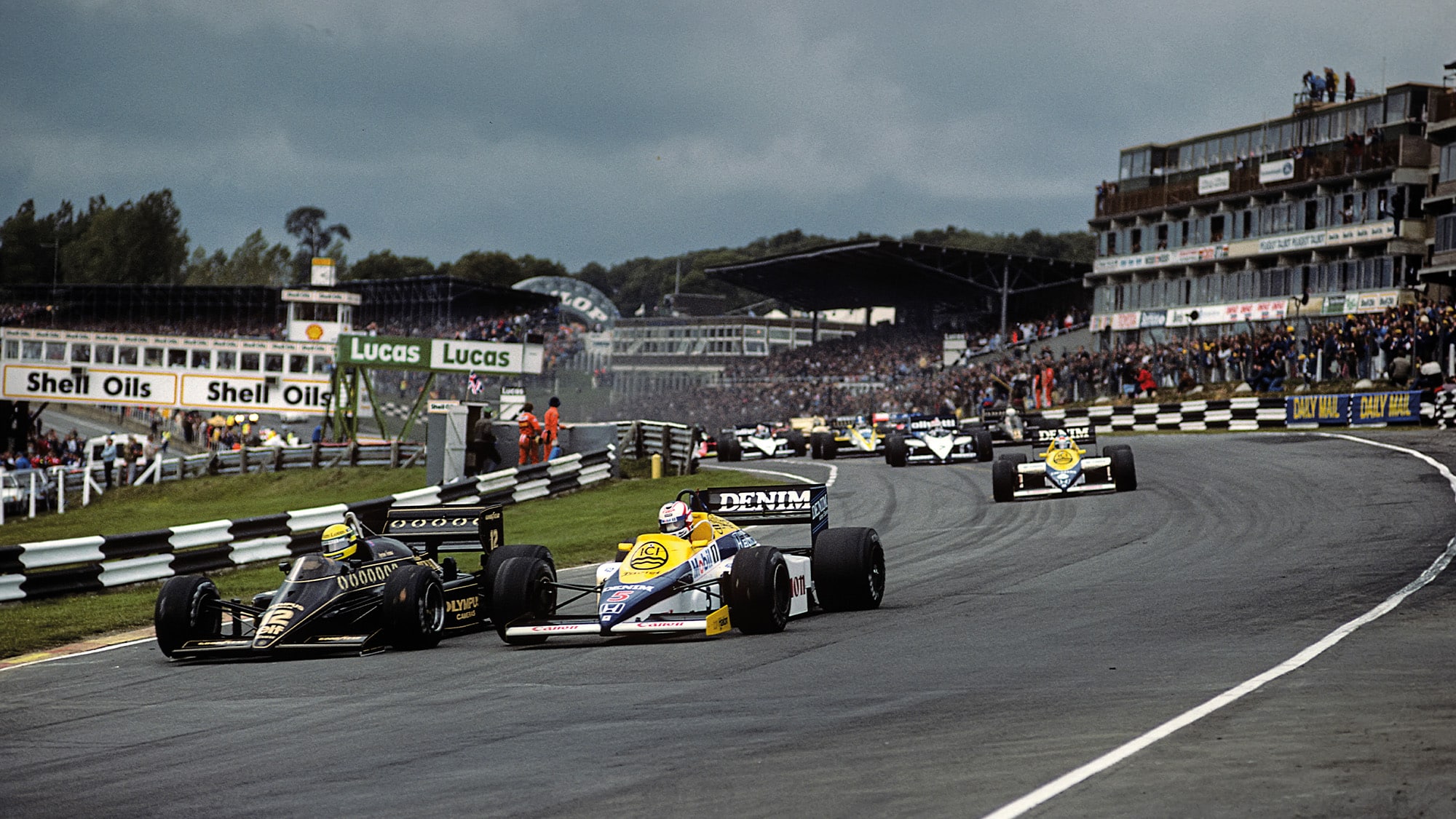
Nigel Mansell Brands Hatch 1985
Having been given a career lifeline by Williams, Mansell qualified third for the 1985 GP of Europe, his 14th race with the team. It would be his first victory and the start of a journey to stardom. Although Mansell would record several ‘home wins’ (and coin a new word, Mansellmania, along the way), this victory stands out. His 1991 win at Silverstone may have had more drama with the taxi for Senna photo-op, as seen on this month’s cover, but 1985 is where his story really began.
Mansell made a flying start to run second behind Senna’s Lotus. A mistake at Druids dropped him to fourth, behind Nelson Piquet and Keke Rosberg, but he recovered his original position after the latter pair tangled at Surtees. Back in the race following repairs, Rosberg impeded Senna and Mansell capitalised before cruising to victory.
Fourth place was enough to secure Alain Prost a first world title, but most of the crowd’s focus was elsewhere.
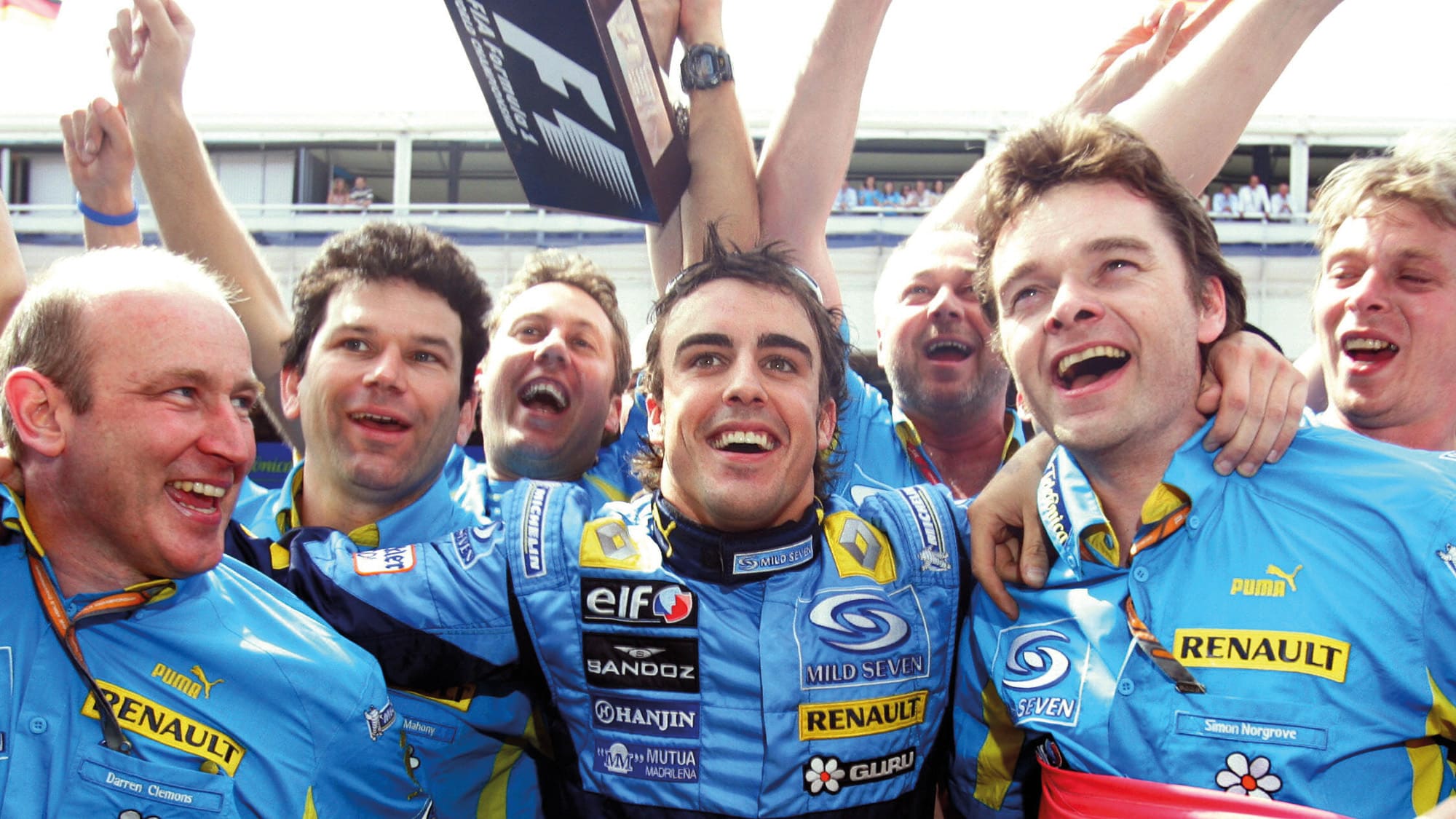
Fernando Alonso Circuit de Catalunya 2006
There was a time when the Spanish GP was one of the most convenient for spectators, because there was rarely much of a queue getting in or out. This was a nation steeped in the culture of motorcycle racing, but one that had produced just a single podium finisher on four wheels since the world championship’s inauguration in 1950 (and that was a shared second place for Fon de Portago, who had handed his Ferrari over to Peter Collins at Silverstone in 1956).
The arrival of Fernando Alonso changed everything. In 2001 his Spanish GP debut with Minardi had been understandably low-key, but two years later he was in a Renault and kept Schumacher honest with a strong run to second – a result he repeated in 2005, this time behind Kimi Räikkönen.
One year on he delivered the result the packed, partisan crowd craved, leading away from pole and staying ahead of the ever-threatening Schumacher. Twice the German ran longer stints in a bid to turn extended low-fuel running into a winning advantage; he managed to split the Renaults after the first round of stops, but ultimately had no answer to Alonso.
It hadn’t been much of a spectacle, but that didn’t dilute the frenzied response.
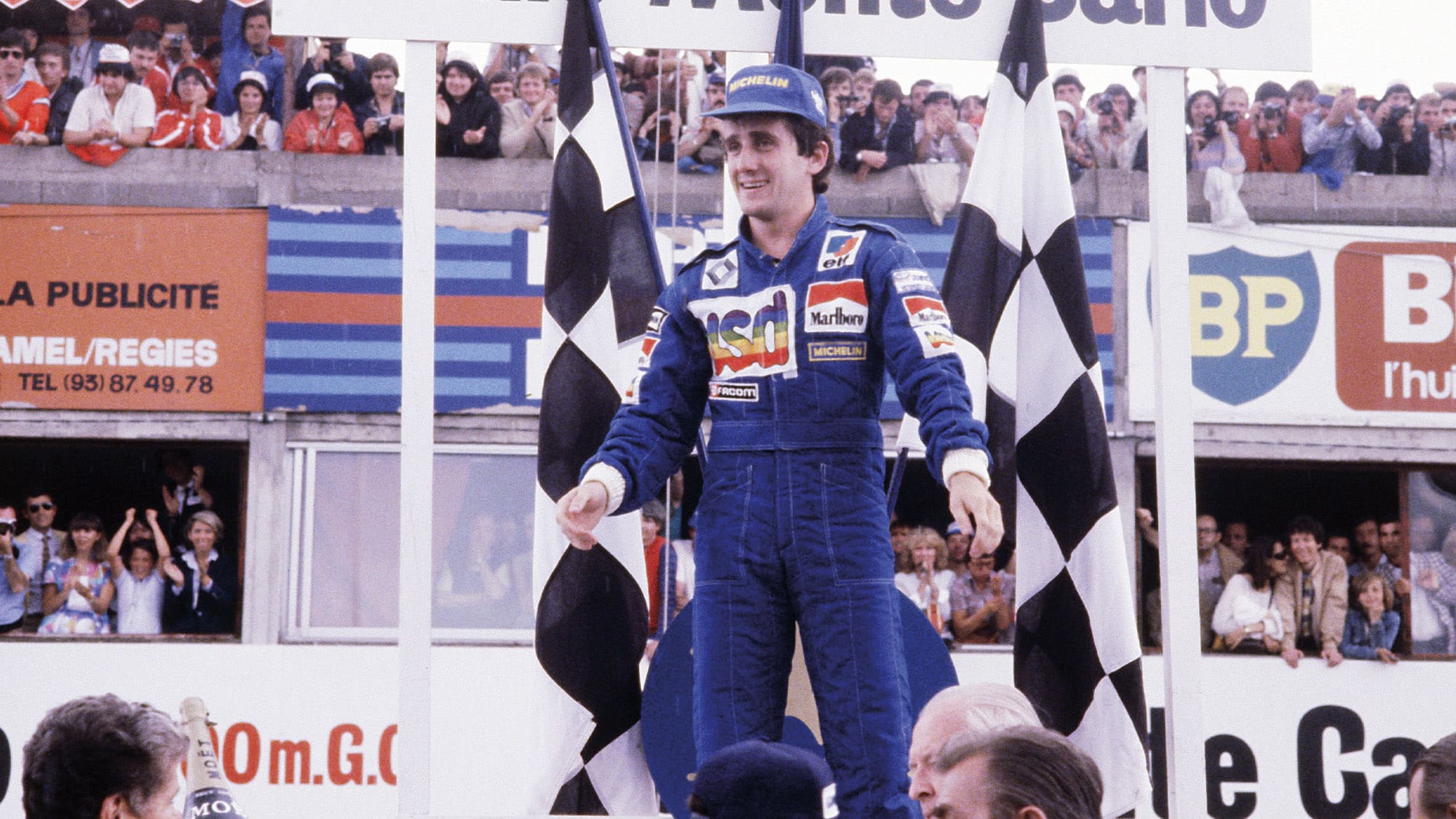
Alain Prost Paul Ricard 1981
This was the race that marked Goodyear’s return to F1 after a brief absence and triggered instant resumption of a tyre war with Michelin; the bigger teams would receive favourable treatment, while the rest would have to scrabble around on what they were given (or else found in their stores).
Nelson Piquet (Brabham) jumped into the lead and his early pace suggested Goodyear had got its sums right, as he built a sizeable gap, and Alain Prost worked his way through to second for Renault. The Brazilian lost ground when his throttle began to stick open, however, which enabled the Frenchman to cut the deficit – despite losing fourth gear.
A downpour then caused the race to be red-flagged, two laps too soon for a result to be declared, which gave Brabham and Renault a chance to fix their faltering cars. The race was restarted over 22 laps, a distance for which Michelin had a suitably soft tyre. Thus equipped, the Michelin runners left Piquet trailing: Prost disappeared into the distance to record not just a home win but also his first of 51.
